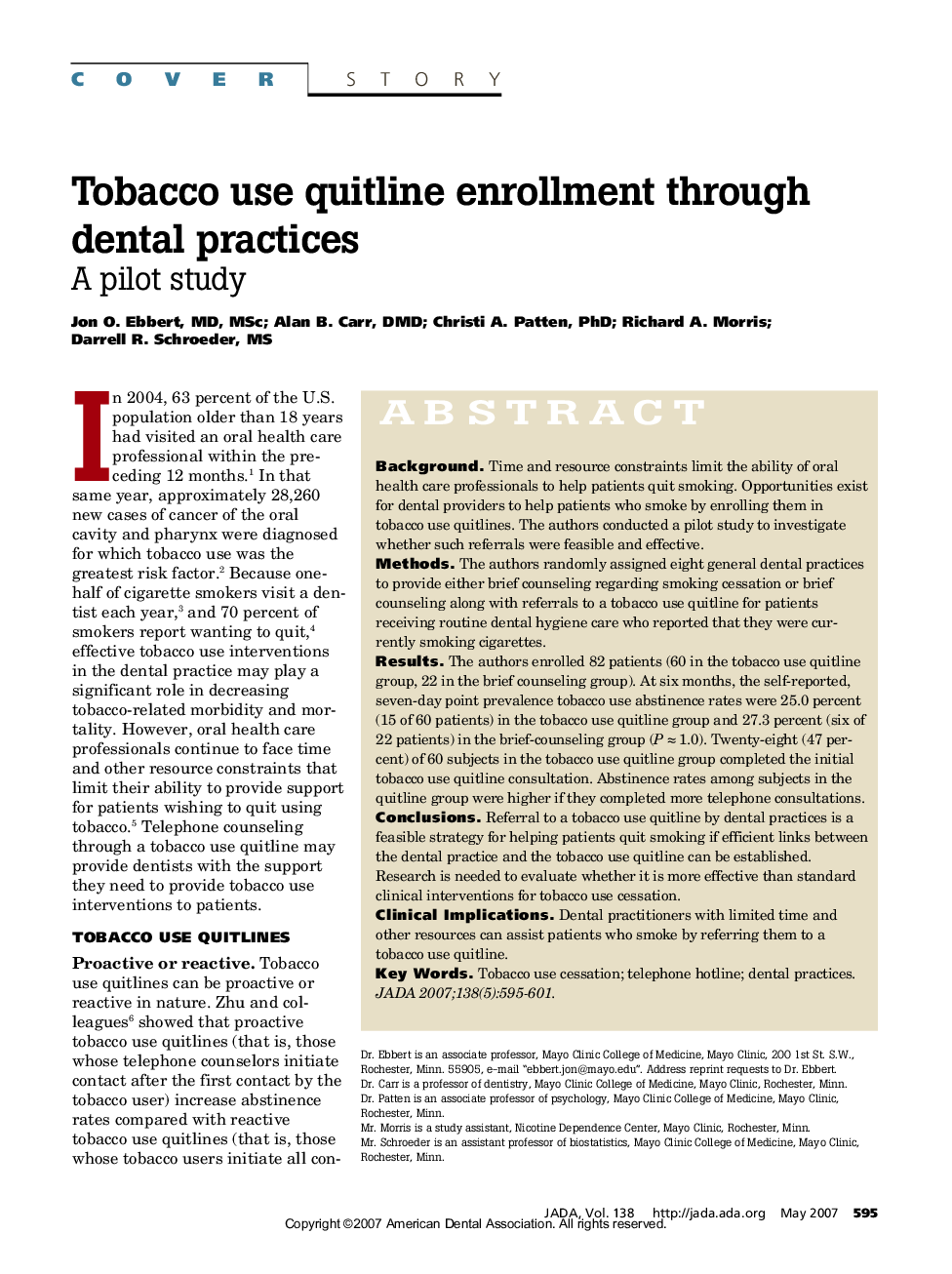| Article ID | Journal | Published Year | Pages | File Type |
|---|---|---|---|---|
| 3140498 | The Journal of the American Dental Association | 2007 | 7 Pages |
ABSTRACTBackgroundTime and resource constraints limit the ability of oral health care professionals to help patients quit smoking. Opportunities exist for dental providers to help patients who smoke by enrolling them in tobacco use quitlines. The authors conducted a pilot study to investigate whether such referrals were feasible and effective.MethodsThe authors randomly assigned eight general dental practices to provide either brief counseling regarding smoking cessation or brief counseling along with referrals to a tobacco use quitline for patients receiving routine dental hygiene care who reported that they were currently smoking cigarettes.ResultsThe authors enrolled 82 patients (60 in the tobacco use quitline group, 22 in the brief counseling group). At six months, the self-reported, seven-day point prevalence tobacco use abstinence rates were 25.0 percent (15 of 60 patients) in the tobacco use quitline group and 27.3 percent (six of 22 patients) in the brief-counseling group (P ≈ 1.0). Twenty-eight (47 percent) of 60 subjects in the tobacco use quitline group completed the initial tobacco use quitline consultation. Abstinence rates among subjects in the quitline group were higher if they completed more telephone consultations.ConclusionsReferral to a tobacco use quitline by dental practices is a feasible strategy for helping patients quit smoking if efficient links between the dental practice and the tobacco use quitline can be established. Research is needed to evaluate whether it is more effective than standard clinical interventions for tobacco use cessation.Clinical ImplicationsDental practitioners with limited time and other resources can assist patients who smoke by referring them to a tobacco use quitline.
